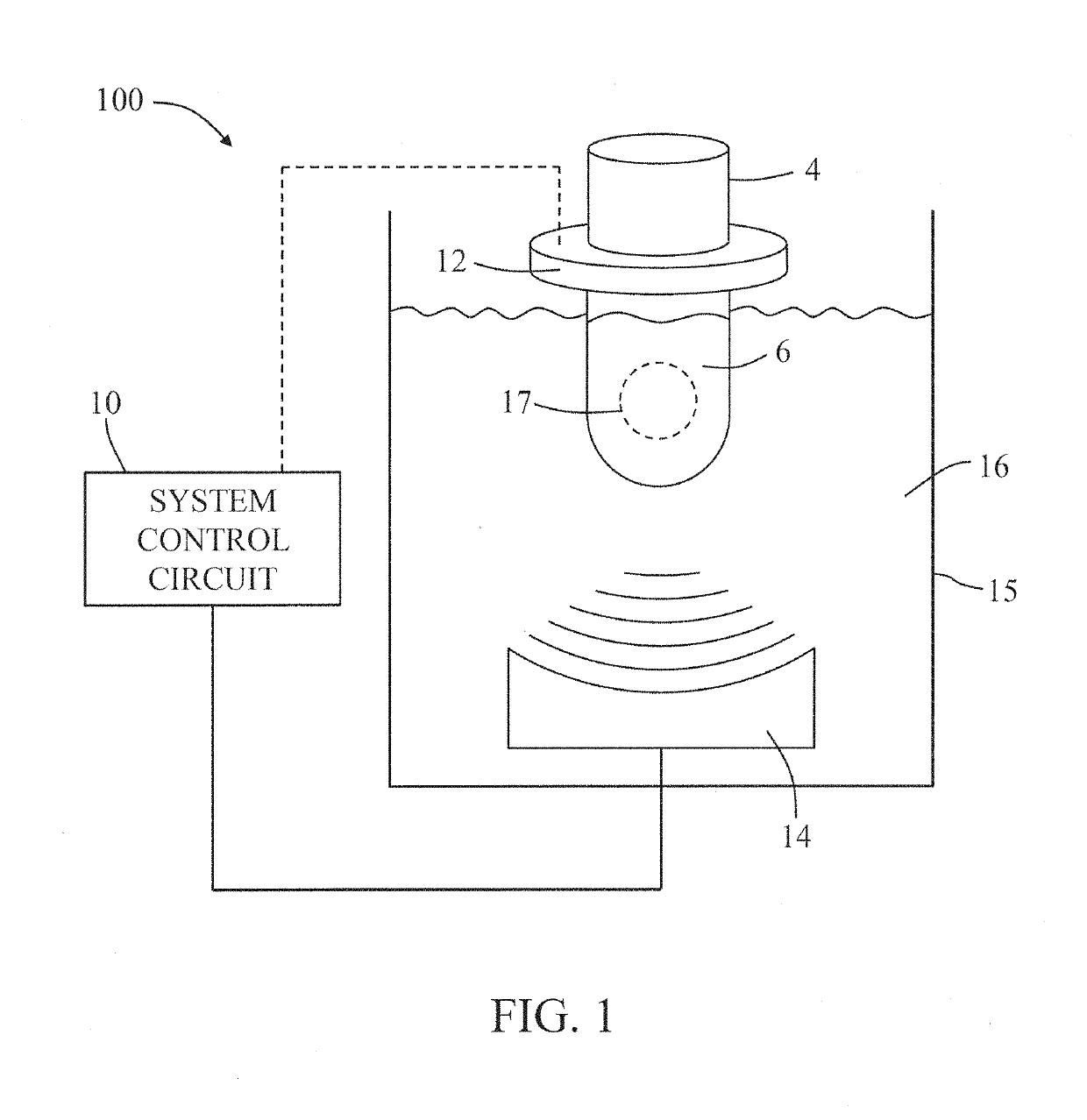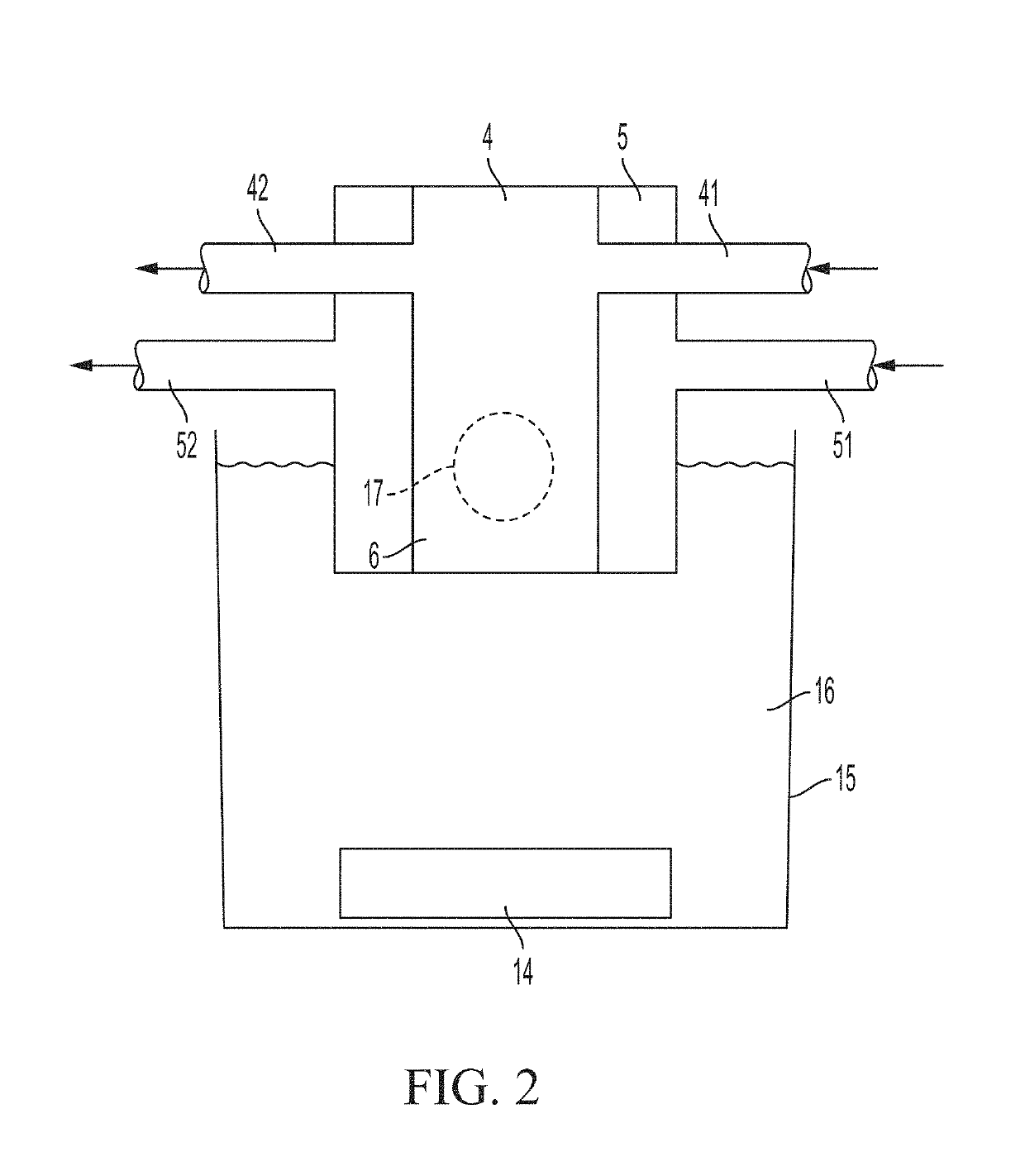Methods and apparatus for temperature control of acoustic treatment of samples
a technology of acoustic energy treatment and temperature control, which is applied in the direction of sampling, instruments, measurement devices, etc., can solve the problems of sample heat, and achieve the effects of fast cooling, increased peak incident power (pip) of acoustic energy, and convenient heat transfer
- Summary
- Abstract
- Description
- Claims
- Application Information
AI Technical Summary
Benefits of technology
Problems solved by technology
Method used
Image
Examples
example 1
[0045]In one example, a sample was flowed through a treatment vessel arranged like that in FIG. 2 (except that cooling liquid was not circulated, and instead the vessel was immersed in a liquid coupling medium as in FIG. 1) and was treated by acoustic energy having three different PIP and DC settings, i.e., (1) a PIP of 35 and DC of 50; (2) a PIP of 175 and DC of 10; and (3) a PIP of 350 and DC of 5. In all cases, the sample was plain water, and was flowed through the treatment vessel at a rate of about 11.5 milliliters per minute. The acoustic energy had a CPB of 1000, and the liquid coupling medium had a constant temperature of about 3.4 degrees C. for all three treatment periods. The temperature of sample flowing into the treatment vessel was about 9.5 degrees C. for all treatment periods.
[0046]The temperature of the sample as the sample was flowing out of the treatment vessel was detected and it was found that the output temperature for treatment period (1) was about 8.6 degrees...
PUM
| Property | Measurement | Unit |
|---|---|---|
| average incident power | aaaaa | aaaaa |
| volume | aaaaa | aaaaa |
| incident power | aaaaa | aaaaa |
Abstract
Description
Claims
Application Information
 Login to View More
Login to View More - R&D
- Intellectual Property
- Life Sciences
- Materials
- Tech Scout
- Unparalleled Data Quality
- Higher Quality Content
- 60% Fewer Hallucinations
Browse by: Latest US Patents, China's latest patents, Technical Efficacy Thesaurus, Application Domain, Technology Topic, Popular Technical Reports.
© 2025 PatSnap. All rights reserved.Legal|Privacy policy|Modern Slavery Act Transparency Statement|Sitemap|About US| Contact US: help@patsnap.com


